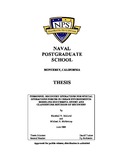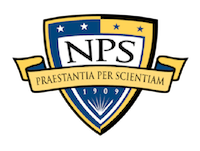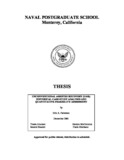Personnel recovery operations for special operations forces in urban environments modeling successful overt and clandestine methods of recovery

Download
Author
McNerney, Michael A.
Ecklund, Marshall V.
Date
2004-06Advisor
Tucker, David C.
Second Reader
Rothstein, Hy S.
Metadata
Show full item recordAbstract
This thesis presents two prescriptive models for approaching challenges to special operations forces with regard to personnel recovery in an urban environment. It begins by developing a model for overt recovery methods, using McRaven's model of Special Operations as the foundation. This model is then tested against three different case studies from operations in Mogadishu, Somalia in 1993. The original six principles proposed by McRaven are complimented with four newly-prescribed principles that account for the interactions of the isolated personnel. Following this analysis, a nonconventional assisted recovery model is presented for clandestine personnel recovery methods. This model borrows the relative superiority concept from McRaven's theory, but proposes six different principles. This model is evaluated using three case studies from the World War II era through Operation IRAQI FREEDOM. These cases support the idea that while the urban operational environment may vary across time and space, the principles supporting successful personnel recovery operations endure.
Rights
This publication is a work of the U.S. Government as defined in Title 17, United States Code, Section 101. Copyright protection is not available for this work in the United States.Collections
Related items
Showing items related by title, author, creator and subject.
-
Unconventional Assisted Recovery (UAR) historical case study analysis and quantitative feasibility assessment
Patterson, Eric A. (Monterey, California. Naval Postgraduate School, 2001-12);During the Gulf War, 34 Coalition pilots were shot down, yet only 6 were recovered by conventional CSAR. Consequently, SOF planners began to consider the impact of integrated air defenses upon personnel recovery and to ... -
Return on investment: ensuring Special Forces can fight another day
Key, Kevin J. (Monterey, California. Naval Postgraduate School, 2011-12);The purpose of this research is to identify possible cultural and policy changes within the Special Forces Regiment that can elongate the operational lifespan of a Special Forces operator through improved physical conditioning ... -
Analyzing the need for special operations teams within the fire service
Lohrke, Trixie G. (Monterey, California. Naval Postgraduate School, 2011-06);Fire suppression and rescue is the primary mission of the fire service, but not all rescue efforts entail putting out fires. For this reason, the fire service created special operations teams. Special operations teams are ...


 04Jun_Ecklund.pdf (2.905Mb)
04Jun_Ecklund.pdf (2.905Mb)

